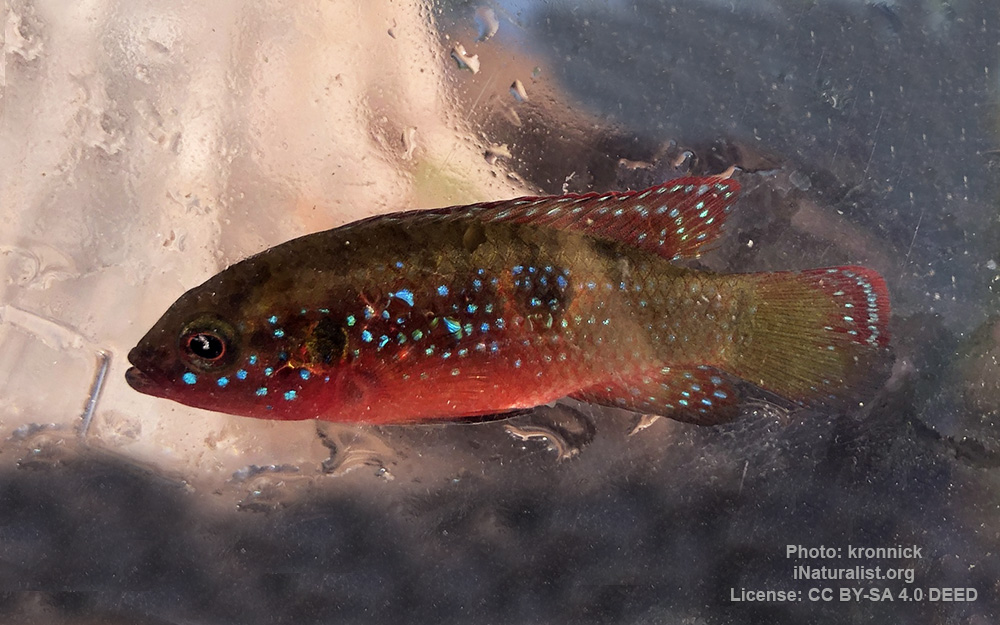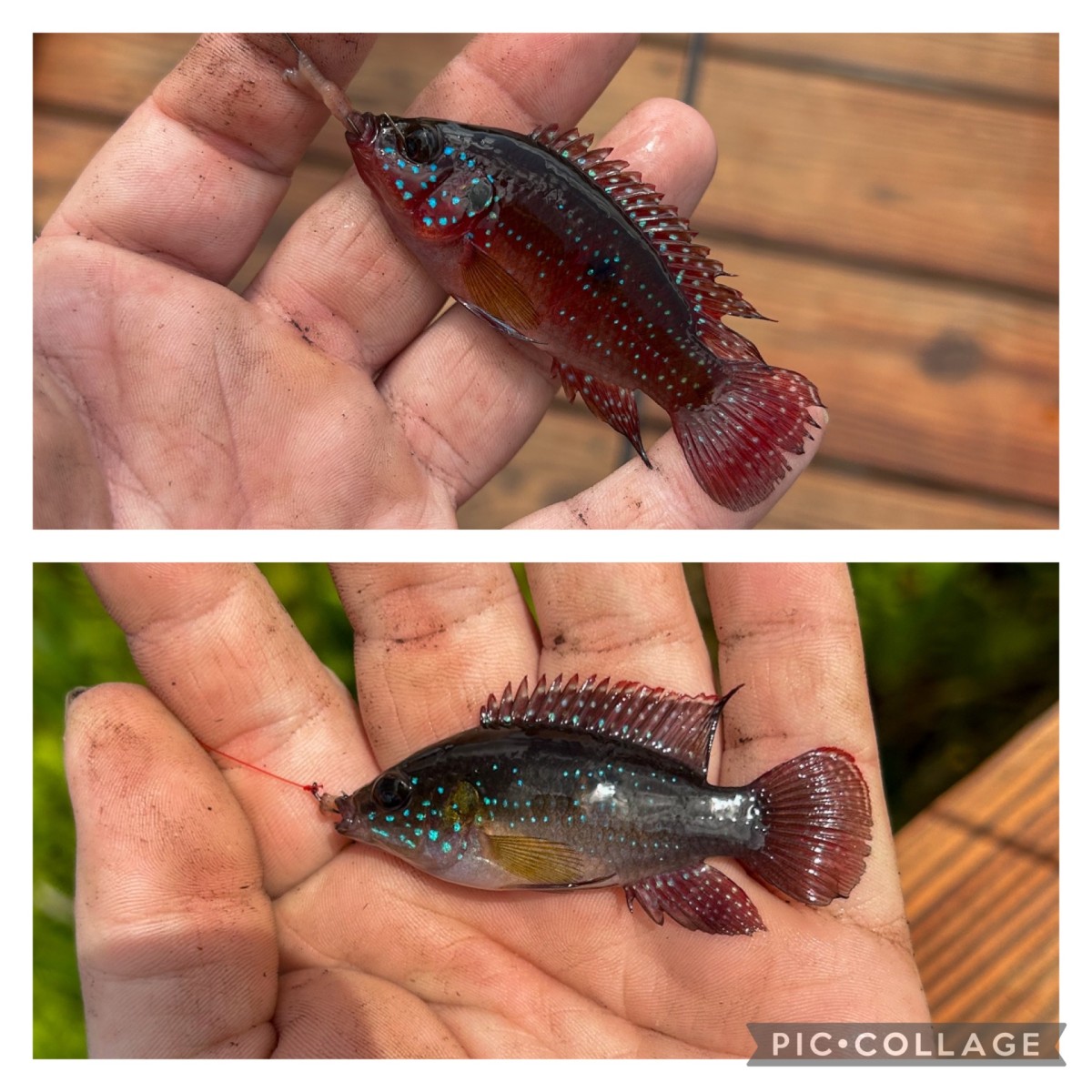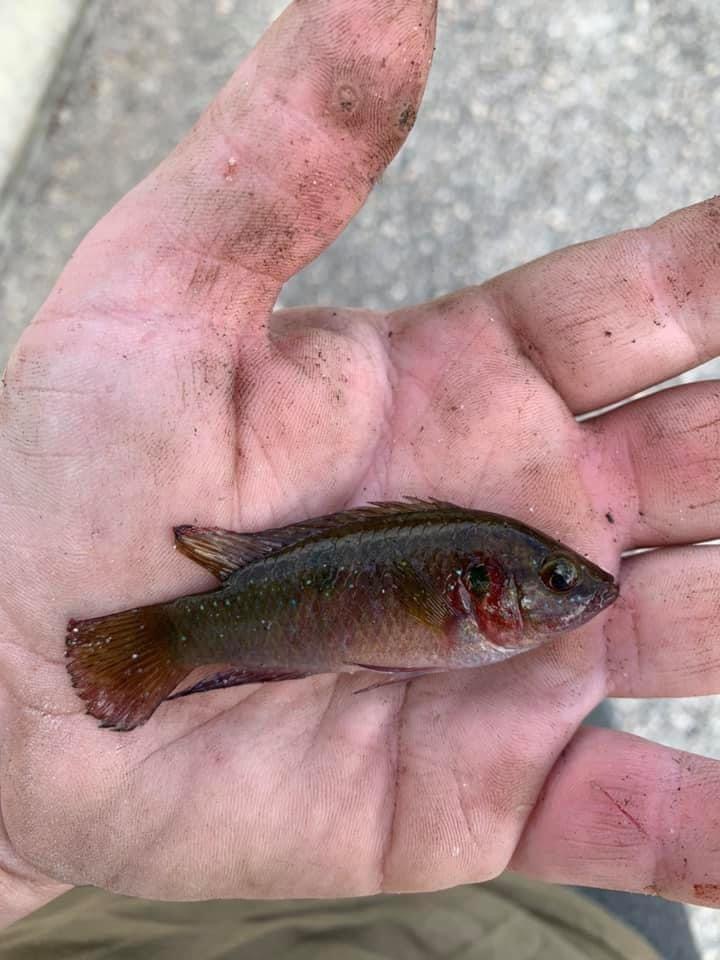Letourneux's Jewel Cichlid
(Rubricatochromis letourneuxi)

Image source: kronnick | inaturalist.org
Classification
General data
Rubricatochromis letourneuxi is a species of cichlid which is native to West Africa and is popular in the aquarium hobby and it has been introduced to the Caribbean and the south-east United States where it is invasive.
Rubricatochromis letourneuxi is a small species of fish that has quite a long, thin body and a rounded tail and which has 13–15 spines in the dorsal fin and 3 in the anal fin. It has a highly variable background colour to the body which may be green-yellow to red-brown or even almost black, this colouration is dependent on various factors such as the sex of the fish, the season, the nature of the fish\\\'s habitat and stress. Breeding males may develop red colouration over the gills and underside. Both sexes have a limited amount of small, brilliant blue iridescent spots on the head, body, and fins and these may be more obvious in breeding adults. It has a dark black spot situated above the lateral line on the flanks and smaller blotches on gill covers and base of the tail.
They can reach a standard length of 12 centimetres (4.7 in) although it is normally a lot smaller and 7 centimetres (2.8 in) is more usual.
Rubricatochromis letourneuxi is found across the northern half of Africa from the River Nile and has been recorded in the Gambia River and Senegal River as well as oases in Algeria.
It has been recorded as an introduced species in the Philippines, Hawaii, Europe and Puerto Rico, as well as in Florida. It is only known to have been established in Florida and Puerto Rico, while in other areas they do not seem to have become established or have been misidentified.
In Florida they were introduced prior to 1965 and was introduced via the aquarium trade, either by releases or by escapes. They were originally confined to the Miami Canal but have begun to spread northwards and westwards, their wide habitat tolerance aiding their dispersal.













